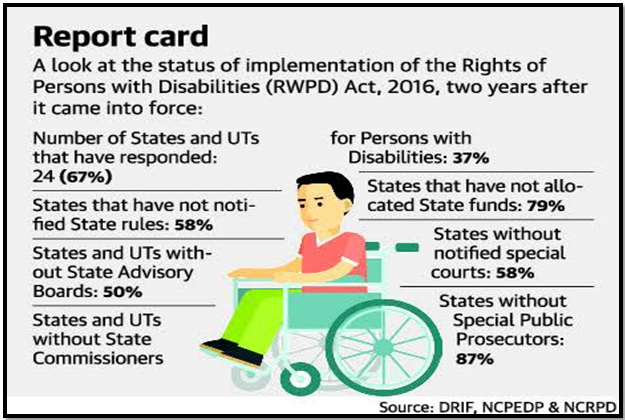STILL NO SIGN OF THE LANGUAGE OF EQUITY AND INCLUSION
Syllabus:
GS 2:
Welfare Schemes for Vulnerable Sections of the population by the Centre and States and the Performance of these Schemes;
Mechanisms, Laws, Institutions and Bodies constituted for the Protection and Betterment of these Vulnerable Sections.
Why in the News?
The 2024 Indian general election announcement by the Election Commission of India lacked sign language interpreters, highlighting systemic exclusion of Deaf and Hard of Hearing (DHH) citizens and sparking discussions on the need for greater accessibility and inclusion in public communications and services.
Source: Dics
Lack of Sign Language Interpreters in Key Announcements
- ECI Announcement: The Election Commission of India’s announcement for the 2024 elections lacked sign language interpreters, highlighting the exclusion of Deaf and Hard of Hearing (DHH) citizens.
- Visibility of Exclusion: This omission in a significant national event underscores how everyday life in India marginalizes DHH individuals.
- Significance of Accessibility: Including sign language interpreters in public broadcasts is crucial for ensuring accessibility and inclusion.
- Impact on Participation: The absence of interpreters hinders the ability of DHH citizens to fully participate in democratic processes.
- Reflecting Broader Issues: This example is indicative of the broader systemic exclusion faced by the DHH community in India.
Need for Equity in Education and Health Care
- Education Gaps: Despite policies promoting equity, the Indian education system largely neglects the needs of DHH students.
- Health Care Barriers: Health care systems lack adequate provisions for DHH individuals, impeding their access to essential services.
- Inclusive Policies: Effective inclusion requires dismantling ableist barriers and incorporating Indian Sign Language (ISL) into mainstream education and health care.
- Current Program Limitations: Programs like the National Programme for Prevention and Control of Deafness focus on medical aspects but ignore quality of life and communication needs.
- Policy Implementation: There is a disconnect between policy recommendations, such as those in the National Education Policy 2020, and their actual implementation.
Sign Language vs. Oralism in Education
- Oralism Dominance: The Indian education system prioritizes oralism, teaching deaf individuals to use their voices and lip-read instead of sign language.
- Lack of ISL Training: Most educators in schools for the deaf are not trained in ISL, limiting effective communication and learning.
- Criticism of Oralism: Oralism has been criticized for isolating deaf individuals and failing to remove social barriers.
- Benefits of Sign Language: Integrating sign language into education helps cognitive development and prevents linguistic deprivation among deaf children.
- Global Recognition: Over 70 countries legally recognize national sign languages, facilitating better access to education and information.
Exclusion in Everyday Life
- Public Invisibility: Deaf individuals often remain invisible in public life due to the lack of accessible communication options.
- Challenges in Daily Tasks: Basic activities like using public transport, watching TV, or seeking directions are challenging without sign language accessibility.
- Limited Employment Opportunities: Job opportunities for the deaf are typically confined to low-skilled positions, highlighting systemic exclusion.
- Media and Entertainment: While some progress has been made in accessible options for films and sports, much more needs to be done in private and public broadcasting.
- Health Care Access: Access to health care, especially mental health services, is severely limited due to the lack of interpreters and trained professionals.
- Communication Barriers: Public services and utilities often lack provisions for DHH individuals, creating significant daily challenges.
- Legal and Administrative Challenges: Interaction with legal and administrative systems is difficult without sign language interpreters, impacting access to justice and public services.
- Social Isolation: The inability to participate fully in social and cultural activities due to communication barriers leads to social isolation for many DHH individuals.
| Initiatives for the Empowerment of Disabled People
The SPARK Project
Other Initiatives
|
Necessary Actions for Inclusion
- Official Recognition of ISL: ISL should be recognized as an official language and integrated into education systems for both hearing and DHH students.
- Training and Employment: Educators should be trained in ISL, and DHH individuals should be employed to teach the language, enhancing job opportunities.
- Health Care Improvements: Health care systems must ensure accessible communication for DHH patients, including employing language-concordant physicians.
- Media Accessibility: All media channels should include deaf programming, with subtitles and ISL interpretation for content in all languages.
- Government Announcements: Live ISL interpreters should be a standard feature in all government event announcements, ensuring real-time accessibility.
- Inclusive Public Services: Public services must incorporate ISL interpretation and other accessibility features to ensure DHH individuals can access necessary services.
- Workplace Inclusivity: Both public and private sectors need to implement policies and practices that promote the hiring and retention of DHH individuals.
- Awareness and Training: There should be widespread awareness campaigns and training programs to educate the general population and public service providers about ISL and the needs of the DHH community.
Conclusion
The systemic exclusion of DHH individuals in India is a pressing issue that demands immediate attention and action. Recognizing and implementing ISL across various sectors, from education and health care to media and government communications, is essential for fostering true equity and inclusion. The authorities must heed the needs of the DHH community to ensure their full participation in society.
Source:The Hindu
Mains Practice Question:
Despite various policies and programs aimed at promoting inclusion, Deaf and Hard of Hearing (DHH) individuals in India continue to face significant barriers in education, employment, and everyday life. Critically analyze the existing challenges and suggest comprehensive measures to ensure equity and inclusion for the DHH community.”
Associated Article:
https://universalinstitutions.com/empowering-disability-inclusion-in-india/




